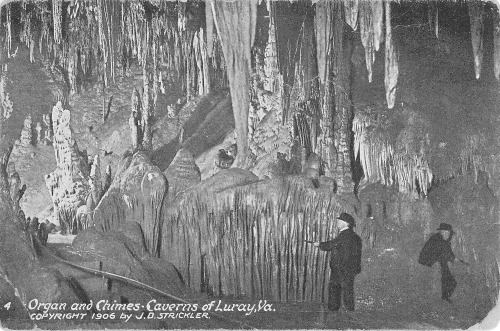A lithophone is a musical instrument consisting of a rock or pieces of rock which are struck to produce musical notes. Notes may be sounded in combination (producing harmony) or in succession (melody). The lithophone is an idiophone similar to the bars on instruments such as the glockenspiel, metallophone, xylophone and marimba.
In the Hornbostel-Sachs classification system, lithophones are designated as '111.22' – directly-struck percussion plaques.
A rudimentary form of lithophone is the "rock gong", usually a natural rock formation opportunistically adapted to produce musical tones, such as that on Mfangano Island, in Lake Victoria, Kenya. The Great Stalacpipe Organ of Luray Caverns, Virginia, USA uses 37 stalactites to produce the Western scale. Another stalactite lithophone is to be found at Tenkasi in South India. Ringing Rocks Park in Pennsylvania is another well known lithophone.A typical Basque (Spain) instrument named Txalaparta (or Chalaparta) can be made of wood or stone, but is traditionally made of woodA more sophisticated lithophone trims and mounts individual stones to achieve a full-scale idiophone:
Probable prehistoric lithophone stones have been found at Sankarjang in Odisha, India.Vietnamese lithophones dating back to ancient times, called đàn đá, have been discovered and revived in the 20th century.The ritual music of Korea features the use of stone chimes called pyeongyeong, derived from the Chinese bianqing.The Musical Stones of Skiddaw from Cumbria, England, have been made into an instrument found in Keswick Museum and Art Gallery.A lithophone called the Musical Stones has been created at Brantwood, the former home of John Ruskin in Cumbria, England, and may be played there by visitors.The Silex Piano, circa 1885, employed suspended flints of various sizes which were struck with other flints to produce sounds.Composer-vibraphonist Wolfgang Lackerschmid uses an instrument called the gramorimba, which is featured alongside the vibraphone and marimba in a trio setting.Icelandic post-rock band Sigur Rós constructed a slate marimba from rocks found in Iceland, this is demonstrated in their DVD Heima.The stone marimba.The hōkyō, a lithophone invented in Japan, has been made from the bars of sanukite.The German composer Carl Orff calls for a lithophone called Steinspiel in his later works. Some lithophones include electric pickups to amplify the sounds.
A stone marimba is a configured in the same manner as the more typical wooden bar marimba. The bars are usually wide like a wooden marimba, but are thinner and flat, which helps increase resonance. The stone marimba may or may not have resonators.
A stone marimba housed at the Musée de l'Homme is possibly the oldest-known musical instrument on the planet.

